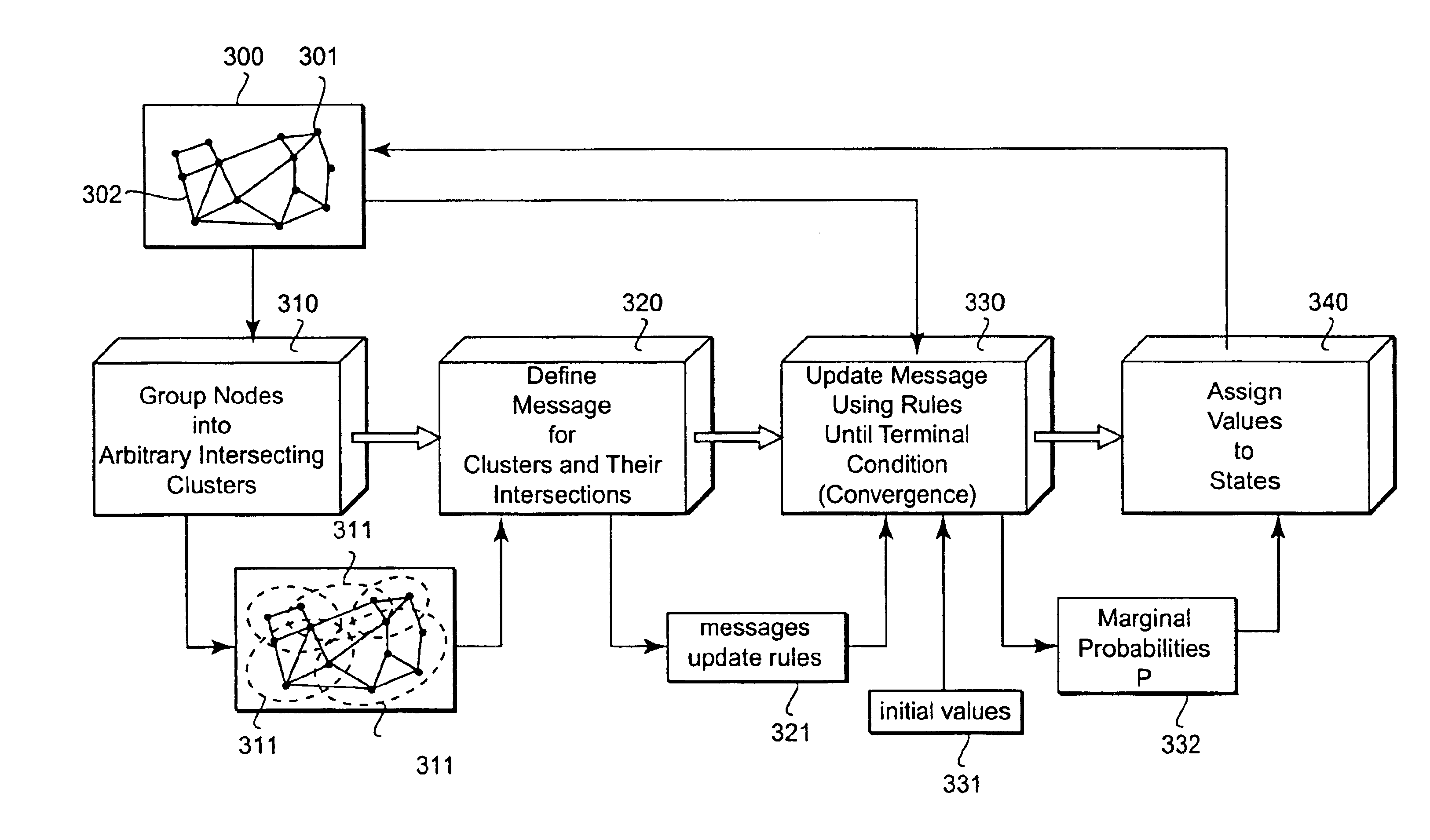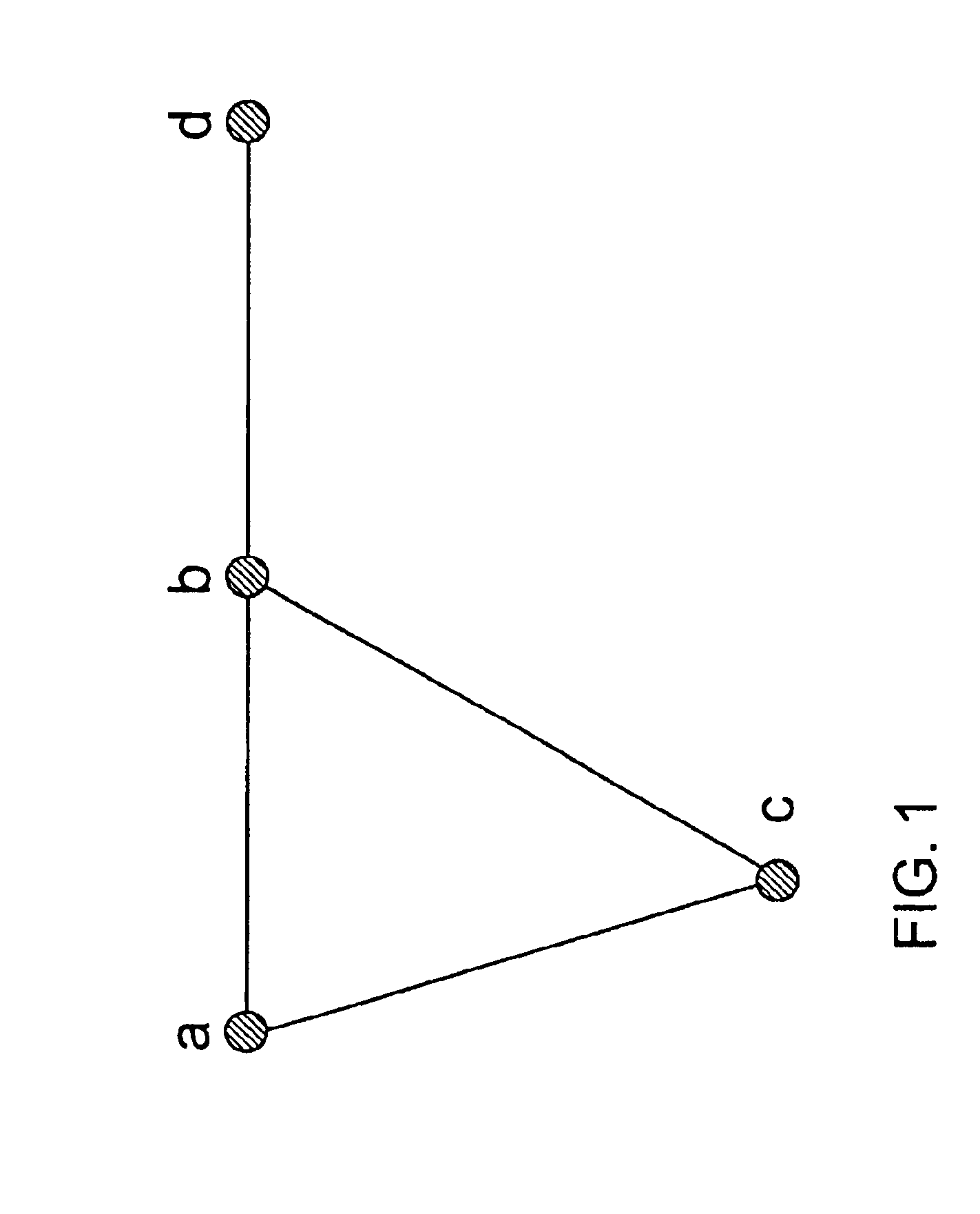Generalized belief propagation for probabilistic systems
- Summary
- Abstract
- Description
- Claims
- Application Information
AI Technical Summary
Benefits of technology
Problems solved by technology
Method used
Image
Examples
Embodiment Construction
Introduction
[0043]Our invention builds on the “cluster variational method” for analyzing cooperative phenomena in statistical physics, see for example, the special issue in honor of R. Kikuchi, Progress in Theoretical Physics Supplements, vol. 115, 1994.
[0044]A physical system is often modeled in statistical mechanics as a Markov network, where the states of the nodes in the network correspond to the physical states of the particles or spins in the physical system. The cluster variational method derives approximations to the “Gibbs free energy” of a physical system. We refer to these as “Kikuchi approximations” to the Gibbs free energy, or the “Kikuchi free energy.” From a Kikuchi approximation to the Gibbs free energy, one can determine properties of a physical system, such as magnetization, specific heat, or the critical temperature for a magnetic spin system.
[0045]The simplest Kikuchi approximation derived with the cluster variational method corresponds to an approximation first ...
PUM
 Login to View More
Login to View More Abstract
Description
Claims
Application Information
 Login to View More
Login to View More - Generate Ideas
- Intellectual Property
- Life Sciences
- Materials
- Tech Scout
- Unparalleled Data Quality
- Higher Quality Content
- 60% Fewer Hallucinations
Browse by: Latest US Patents, China's latest patents, Technical Efficacy Thesaurus, Application Domain, Technology Topic, Popular Technical Reports.
© 2025 PatSnap. All rights reserved.Legal|Privacy policy|Modern Slavery Act Transparency Statement|Sitemap|About US| Contact US: help@patsnap.com



